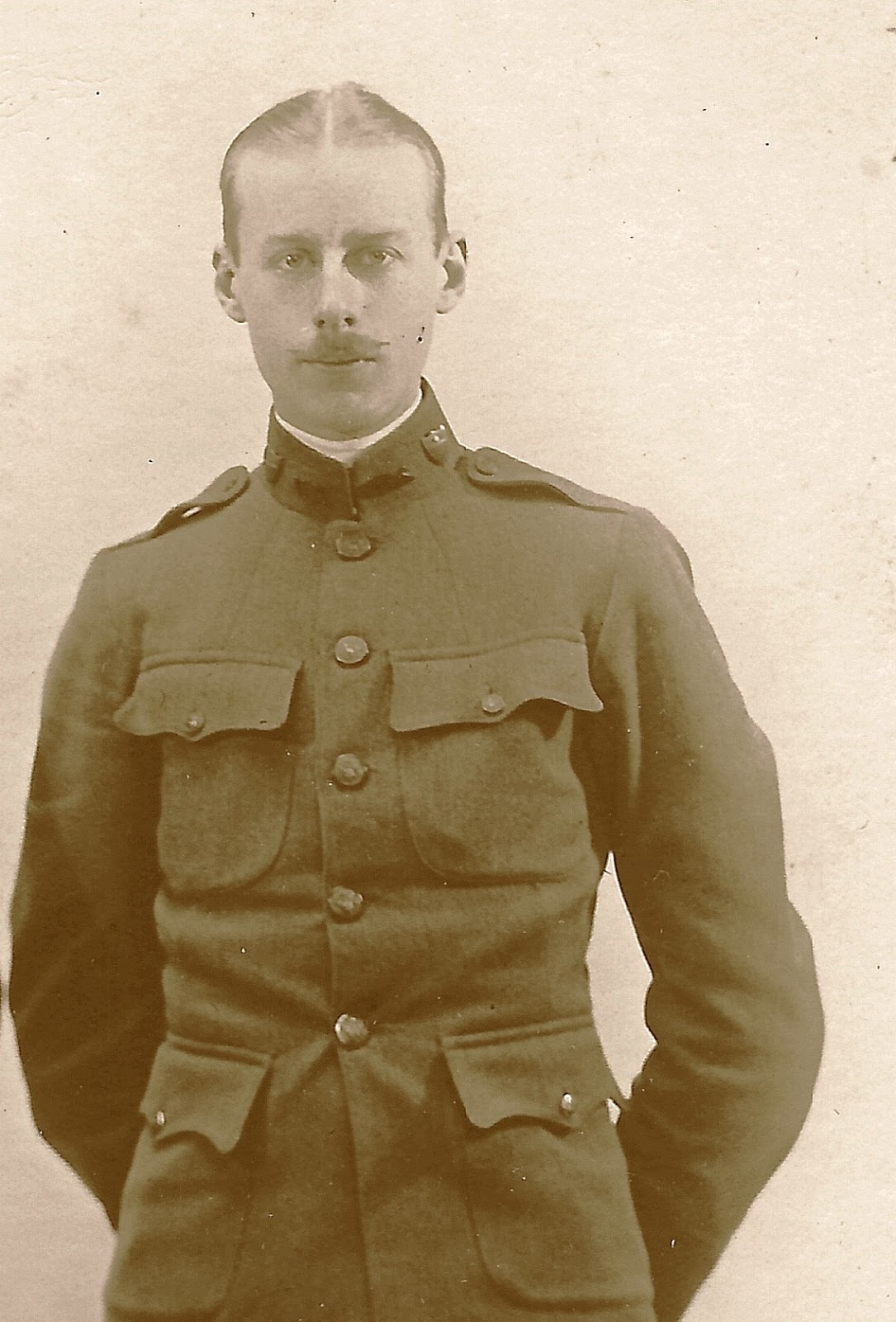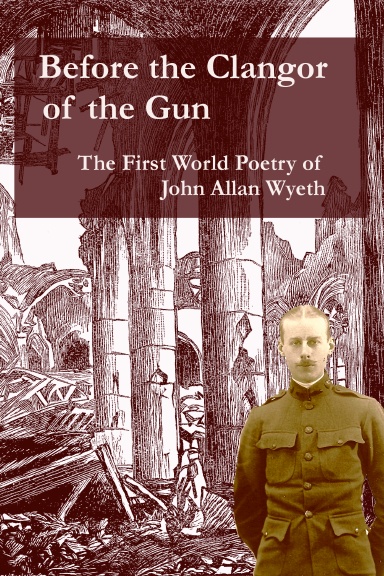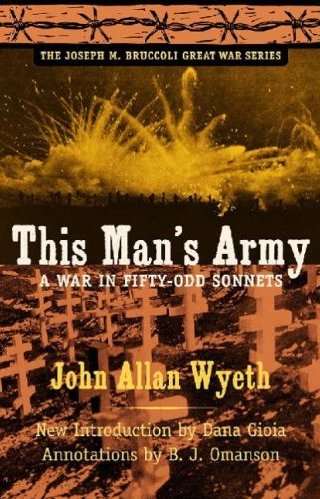
John Allan Wyeth
John Allan Wyeth, poet, painter, pianist, was born in New York City, 1894. He was educated at Princeton
(M.A. 1917), where he was part of the literary circle which included Edmund Wilson, F. Scott Fitzgerald
and John Peale Bishop. (1) They most often met at the Charter Club, where Wyeth was frequently heard on
the piano playing Debussey. Wyeth and Edmund Wilson would remain in touch into the 1950s. Wyeth's closest
friend at Princeton was medievalist "Bert" Friend, who would later become a leading authority on Byzantine
art and early manuscript illumination.
During the war, Wyeth served with Headquarters, 33rd Division as Division Interpreter, and member of the
division intelligence section. He also served with the Army of Occupation in Germany throughout most of
1919.
After Wyeth's discharge in October, 1919, he spent the winter recuperating at his brother's home in Palm
Beach. While there, Wyeth applied for and received a fellowship from Princeton to study for a year in
Liege, Belgium. On July 24, 1920, Wyeth sailed for Europe on the SS St Paul. According to his
passport, he intended to visit Belgium, Holland, Luxembourg, England, France and Switzerland, for the
purpose of "study". He completed his oral exams in French and German in 1923.
For a time Wyeth considered pursuing a graduate degree but instead, by 1926, Wyeth had taken up residence in
Rapallo, Italy where, as suggested by recently discovered evidence, he became acquainted with Ezra Pound,
Max Beerbohm, Gerhart Hauptmann and W.B. Yeats. (See "Notes on Wyeth's Years in Rapallo" in the appendices
of Before the Clangor of the Gun: The First World War Poetry of
John Allan Wyeth).
It was during his time in Rapallo that, according to
a letter to his graduate advisor explaining why he had decided to abandon his studies, Wyeth devoted
himself to literature and most probably wrote the sonnet sequence published in 1928 as This Man's Army.
As demonstrated in the analysis of Dana Gioia, Wyeth's innovative use of the sonnet form employs many Modernist
techniques, and raises the possibility of Pound's influence on Wyeth's poetic practice.
By the early 1930s, after This Man's Army failed to garner significant critical notice, Wyeth abandoned literature for
painting. He studied briefly with Duncan Grant, a member of the Bloomsbury Group, in 1932 and,
on the strength of an introduction from Grant, studied for several years with Jean Marchand, also associated with the Bloomsbury Group, at the
Academie Moderne in Paris for six years. Wyeth went on to paint post-Impressionistic landscapes in Bavaria,
the south of France and in the Greek islands throughout the 1930s. Wyeth exhibited in Paris, and later in
Washington, DC, Pittsburgh, and New York, but with never more than limited critical notice.
A wealth of circumstantial evidence suggests that Wyeth operated as an observer of Nazi activities for British
Intelligence throughout the 1930s, while painting in Bavaria, at Salem and Berchtesgaden.
(See the chapter "Poet, Painter, Spy" in Before the Clangor of the Gun: The First World War Poetry of
John Allan Wyeth).
Passenger ship records show that Wyeth returned to New York from England in January of 1938. He must have
returned to Europe for a time shortly thereafter, for records next show that he arrived in New York by
passenger ship from France on the eve of the war, in late August 1939. During WWII, Wyeth served in the
Coast Guard.
John Allan Wyeth died in 1981. He is buried in Blawenburg Cemetery, in Blawenburg, Somerset County, New Jersey.
BJ Omanson
Morgantown, West Virginia
11 January 2023
For more information on Wyeth see
The War Sonnets of John Allan Wyeth.
 Before the Clangor
Before the Clangor
of the Gun:
The First World War Poetry
of John Allan Wyeth.
by BJ Omanson
|
 This Man's Army:
This Man's Army:
A War in Fifty-odd Sonnets.
by John Allan Wyeth
Introduction by Dana Gioia.
Annotations by BJ Omanson.
|
|